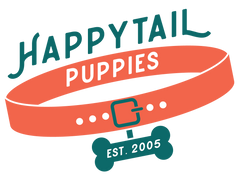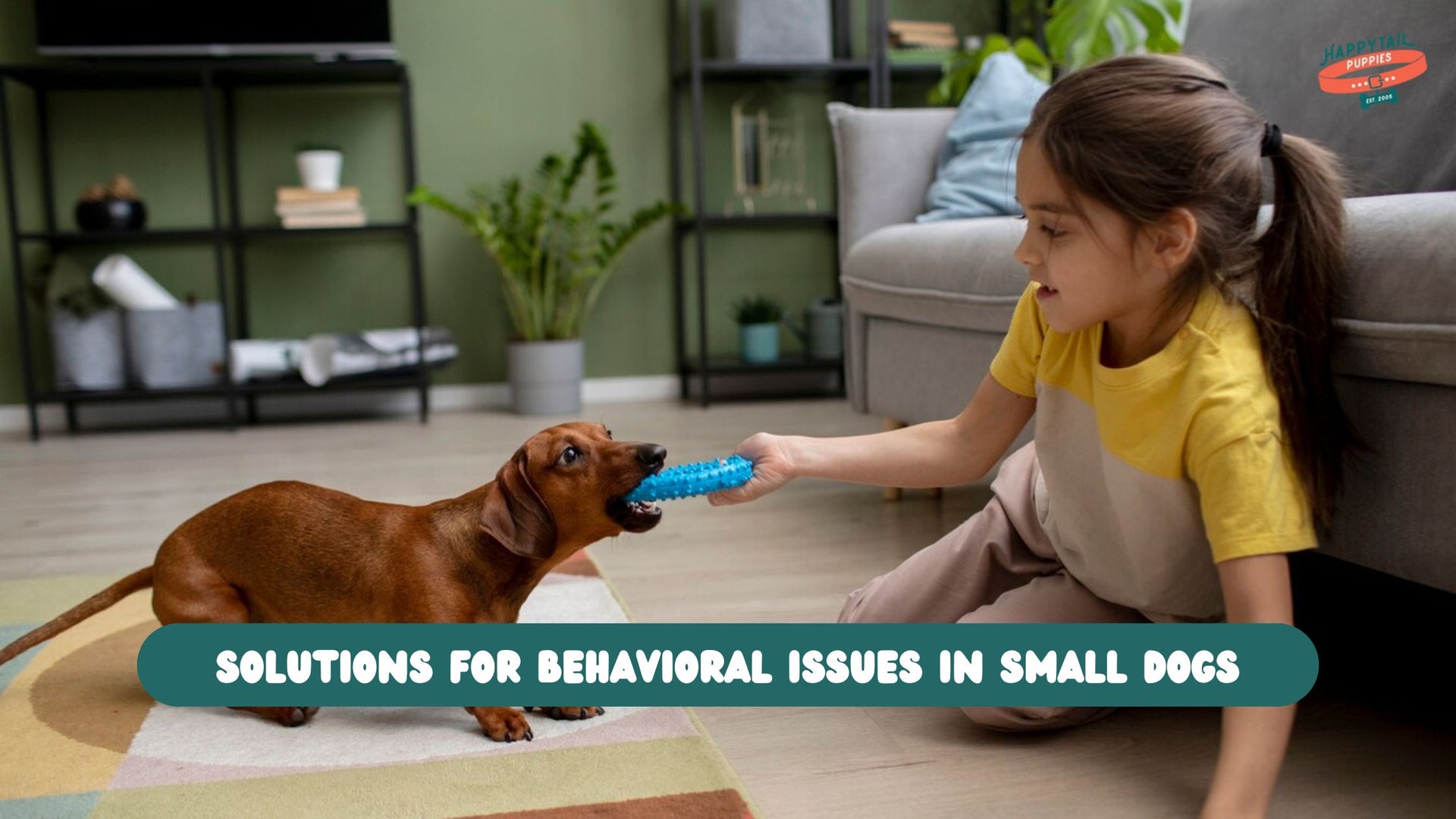Solutions for Common Behavioral Issues in Small Dogs
Small dogs add energy and joy into our lives today, forming the most adorable member of our family. But, often, like all the pets, they showcase specific behavioral issues that prove challenging even to the highly dedicated pet owners. Such issues often arise from various causes, including environmental factors, instincts, and upbringing. It is essential to keep in mind that irrespective of their compact sizes, they form huge personalities that, at times, lead to unwanted behaviors. Fortunately, the common behavioral issues in small dog breeds can be handled through proper care, patience, understanding, and training.
Common Behavioral Issues in Small Dogs and Their Solutions
Although small dogs are affectionate and charming, they develop behavioral issues, such as craving attention. Identifying such intricacies forms the initial step towards ideal solutions that foster a happier and healthier relationship with pets.
Excessive Barking
The small dog breeds are often notorious for being known for excessive barking which turns into an annoyance for the neighbors and owners. Breeds such as Pomeranians and Chihuahuas are specifically prone to vocalizing their feelings, whether it forms fear, excitement, or boredom. Although barking forms the natural dog behavior, it becomes problematic whenever it happens in an excessive way or during inappropriate times.
Solution: Training is highly effective for dogs with behavioral issues like excessive barking. The ideal place to initiate training is by making your dog learn about commands like " quiet." Positive reinforcement is often used to reward quiet behaviors, although distractions such as treats or toys can help shift their focus from the barking source. Furthermore, addressing such underlying causes of boredom or anxiety with the help of mental stimulation or exercises often reduces the chances of excessive barking.
Separation Anxiety
Several small dog breeds suffer from separation anxiety, which manifests whenever they are left alone for longer periods. Breeds like Shih Tzu or Miniature Schnauzer are specifically prone to this issue, which becomes restructured or stressed whenever they get separated from their owners. The symptoms include destructive chewing, baking, winning, and mishaps at home.
Solution: Eventually, adapting your dog breeds to being alone is the ideal way to minimize separation anxiety. Initiate the process by leaving them alone for short times and gradually stretching the time away. Offer them comfort items like a piece of clothing or a favorite toy to reassure them in your absence. The puzzles and the interactive toys dispensing the treats will keep your dogs occupied while you are away from home. In serious instances, it is important to consult with a professional dog trainer or a vet is a must-have.
Also Read : Tips to Manage Separation Anxiety in Dogs
Aggression Towards Other Dogs
A few small dog breeds show aggressive behavior toward other dogs, making the visit to the dog park and walks stressful. Breeds such as Dachshunds show protective or territorial aggression that stems from their instincts of guarding their space or resources. This behavior results in growling, barking, or lunging at the other dogs.
Solution: It is important to offer early socialization to your dog as it can help prevent aggressive behavior towards the other dogs. Introducing your toy breed to the other dogs under calm and controlled spaces can help them to identify the other animal as a friend and not a threat. You can use reward-based training to teach your furry companion how to respond calmly, even in the presence of other dogs. If there is persistent aggression, working along with a professional behaviorist is often required to rectify their behavior.
Resource Guarding
Different small dog breeds, like Miniature Dachshunds and Shih Tzu, are often prone to resource guarding. This behavior occurs whenever the dog becomes possessive over its toys, food, and other valuable items. It results in snapping, growling, and even biting whenever someone approaches its cherished valuables.
Solution: It is essential to work towards desensitizing your dog to the approach of the rest while playing or eating. Start by approaching your furry companion from a distance and rewarding their calm behavior with treats. Eventually, moving closer over time proves rewarding the non-aggressive and calm behavior. Train your dog to commands like "leave it" or "drop it" that help in the management of resource guarding. Do not punish your dog since it would level up their anxiety and worsen their guarding behaviors.
House Soiling
House soiling or any other inappropriate elimination is a generic issue among small dog breeds, specifically in Toy Poodles and Chihuahuas. A few of the toy breeds grapple with house training since they have smaller bladders and high levels of energy, making them prone to indoor mishaps.
Solution: Patience and consistency are important while house training a small dog. It is important to create a consistent potty schedule and feeding while rewarding your dog instantly whenever they are eliminating the right spot. Crate training is beneficial since dogs are prone to avoiding soiling in the areas where they sleep. Ensure to monitor your dog up close and offer them numerous scopes for bathroom breaks outdoors. Over time, the dogs will develop good house-training behaviors.

Jumping on People
Small dogs like Pomeranians often jump on people to seek attention or display their excitement. Although this behavior appears harmless due to its compact size, it is often annoying to the guests and dangerous in a few situations.
Solution: You should train your dog to politely greet people which is important to curb their jumping behavior. It is important to teach your dog to sit while greeting individuals while rewarding them to remain calm. If they are jumping, wait to give them attention till they are settling or sitting down. It is important to follow consistency for those who are interacting with dogs to follow the same rules to reinforce the much-needed behavior.
Nipping and Chewing
Chewing and nipping are common behaviors among small dogs, specifically in teething breeds or puppies like the Miniature Schnauzer. Although chewing is a natural behavior, it becomes problematic whenever it is directed at inappropriate items like human hands, furniture, and shoes.
Solution: It is important to offer your dog the right type of chew toys that direct their chewing instincts away from furniture or other household items. Whenever your dog starts to chew or nip on something inappropriate, divert them to the acceptable toys while praising them for chewing on them. Teach them the command "leave it," as it can help prevent chewing and nipping behaviors from rising.
Fearfulness and Shyness
Small dog breeds like Shih Tzus or Chihuahuas are often prone to shy or fearful behaviors that lead to hiding, skittishness, or aggression during unfamiliar situations. These dogs are often sensitive to loud noises, new spaces, or strangers, which makes social interactions overwhelming.
Solution: Growing confidence in your dog with the help of eventual exposure or positive socialization is the main key to overcoming fearfulness. Initiate by introducing your furry companion to new places, people, and sounds in a controlled and calm way. Also, ensure to reward them for this calm and confident behavior. Refrain from forcing your dog into situations leading to fear since it worsens the anxiety. Over time, they become extremely comfortable across the new settings.
Leash Pulling
Early-onset aggressive behaviors include leash pulling among many smaller dog breeds, such as the Dachshund and Jack Russell Terrier. These dogs are quite small but active and, as a rule, determined, which makes them investigate every smell, view, and noise in their surroundings. Their determination and energy can be a problem during walks because the dog drags along the leash or tries to run towards a toy, other pet, or an interesting smell.
Solution: Teaching your dog how to walk without pulling on the lead is time-consuming and needs repetitiveness. Praise your dog when it is walking close to you, and quietly and gently halt walking if the dog starts to pull. To distract them, use their favorite inducements or other commanding words such as ‘heel.’ Harness instead of collars is also good for decreasing the pulling force and making the walks more interesting for both you and your dog.
Hyperactivity
However, some small dog breeds, like the Pomeranians, are characterized by high energy levels. Although this seems rather cute, it may lead to excessively energetic actions in children, like running or jumping or even the inability to be still. This extra energy can manifest as negative or destructive behaviors, such as restlessness indoors or excessive jumping around guests.
Solution: Lack of enough physical and mental exercise is mainly one of the causes of hyperactivity that should be observed by providing adequate physical and mental exercises to your dog. Walking, playing, and stimulating their brain with toys like puzzles help burn energy in dogs. Training your dog to respond to verbal cues such as sit, stay or even ‘settle’ or ‘calm’ can help to calm a dog down once they become too excited.
Begging for Food
This can mainly be observed in small-breed puppies like the Shih Tzu and Chihuahua because they crave snacks. Much as it may be satisfying to give in to their cute looks, this kind of behavior becomes a nuisance. It can also lead to unhealthy food selection and subsequent intake, leading to unhealthy weight gain and other complications of their health.
Solution: Nonetheless, begging should be discouraged for one to avoid it. There should be set limits regarding meal times. Use fixed feeding times so your dog will not constantly bug you for a bite, which only happens when you allow them to eat from your plate. Another thing you can do is make sure your dog knows how to go to their bed or the place you want them to be during feeding time so they do not beg. Reward them for sitting still during a meal until everything is finished on the table.
Conclusion
As much as being cute, small dog breeds, especially puppies, are full of energy, and they can be mischievous at times and create a great deal of havoc. From barking too much, feeling anxious when owners leave home, or pulling on a leash, these issues can be solved through training, time, and familiarization. Separately, understanding specific urges and inclinations of dogs combined with your pet breed can also go a long way towards correcting undesirable behavior. Understanding and catering to your small dog’s needs will act towards building a good rapport with your pet.


